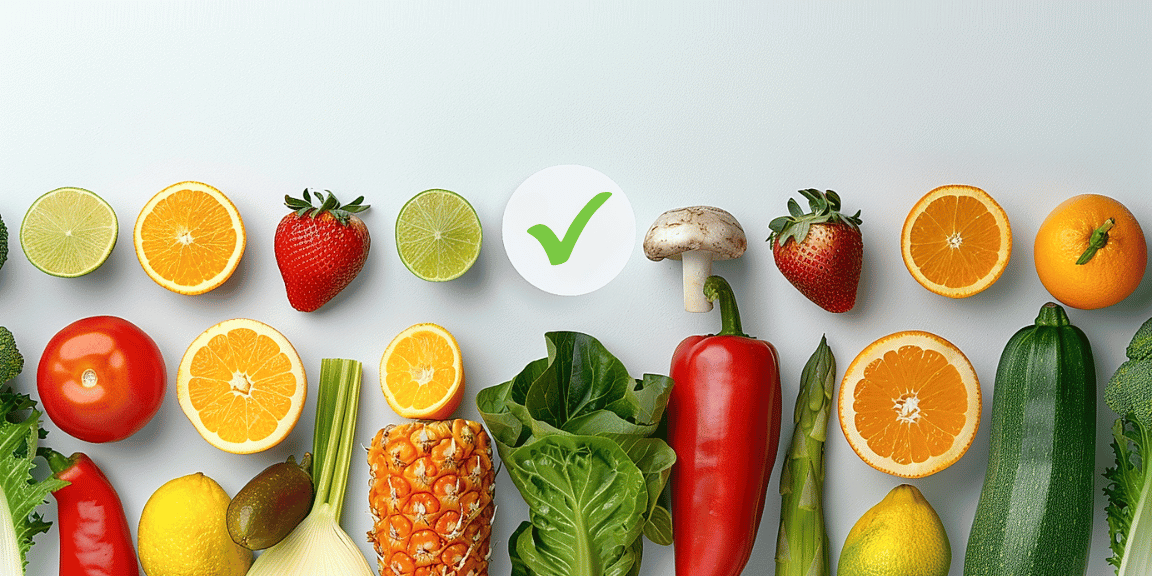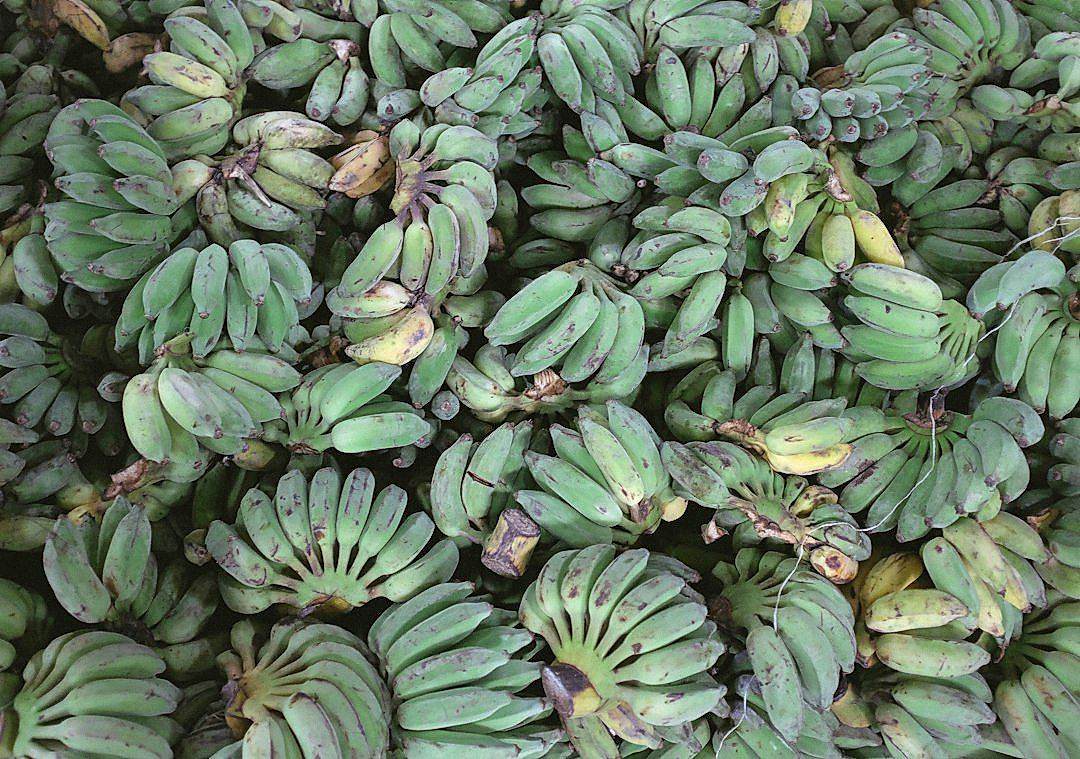The complexities of fresh produce distribution have long been recognized by industry professionals worldwide.
Adhering to a variety of regulatory standards has presented a significant challenge for distributors.
These regulations often span various governmental jurisdictions, causing confusion and raising costs.
However, recent developments have started to streamline these complexities, posing effective solutions to these regulatory challenges.
This article discusses these advancements and their impact on the industry.
It examines how these changes have affected various aspects of the produce distribution process, from farm to retail.
Contents
- Regulatory Hurdles In Produce Distribution Solved
- 1. Streamlined Import/Export Permit Processes
- 2. Simplified Agricultural Inspection Procedures
- 3. Reduced pesticide regulation complexities
- 4. Eased Quarantine Rules for Imported Produce
- 5. Simplified Organic Certification Process
- 6. Quickened Process for Acquiring Distribution Licenses
- 7. Elimination of Redundant Food Safety Regulations
- 8. Expedited response on sanitary phytosanitary measures
- 9. Increased Transparency in GMO Labeling Regulations
- 10. Efficient Resolution of International Trade Disputes
- The Bottom Line
Regulatory Hurdles In Produce Distribution Solved
1. Streamlined Import/Export Permit Processes
To begin with, streamlining the import/export permit processes is a pivotal step towards eradicating the current regulatory hurdles in produce distribution.
This involves eliminating unnecessary paperwork and simplifying the application procedures, creating a more efficient and straightforward permit acquisition process for agricultural produce traders.
Complex and time-consuming import/export processes present a significant regulatory obstacle for farm produce distribution.
By streamlining these processes, the government and relevant agencies can make it easier for produce distributors to import and export goods, thus promoting the growth and sustainability of the industry.
A streamlined import/export permit process fosters a conducive environment, sparking growth and improving efficiency in the agricultural produce distribution sector.
This reformation can be achieved by digitalizing the permit application process, which will reduce the application time and increase efficiency.
It also eliminates physical barriers, allowing distributors from various geographical locations to apply and acquire permits irrespective of their location.
Digitalized and simplified permit processes will also make it easier for regulators to track and monitor the import and export of agricultural produce, improving compliance and regulation adherence.
Furthermore, a standardized and simplified process will reduce corruption and unethical practices related to permit issuance and acquisition.
It’s important to ensure that all relevant stakeholders, including farmers, distributors, and importers/exporters, are aware of the new streamlining process and its benefits.
This can be achieved through regular seminars, workshops, and capacity-building programs focused on teaching the importers/exporters on how to navigate the streamlined process.
A user-friendly interface on the digital platforms can help expedite the transition and make the digital process more approachable for distributors.
Sustained monitoring and evaluation of the streamlined process are crucial to identify any hitches and room for improvements.
By working together with the distributors and incorporating their feedback, the authorities can ensure that the streamlined import/export permit process evolves to meet industry needs.
To sum up, a streamlined import/export permit process will significantly help eliminate regulatory hurdles, making it easier for produce distributors to navigate the intricacies of international trade and focus more on their core business- supplying quality agricultural produce.
2. Simplified Agricultural Inspection Procedures
In the production and distribution of agricultural products, one significant hurdle has historically been arduous inspection procedures.
These procedures are established to ensure that produce adheres to food safety regulations and does not pose health risks.
However, a common complaint among distributors and farmers is that these inspections are too complicated and time-consuming, delaying shipments and increasing costs.
In response, regulatory bodies have begun to implement simplified agricultural inspection procedures.
The goal of these procedures is not only to expedite inspections but also to ensure that checks remain robust enough to guarantee food safety.
This simplification process involves streamlining paperwork and removing unnecessary steps in the process while retaining key safety checks.
For instance, certain inspections that were previously conducted in multiple stages may be consolidated into a single, comprehensive inspection scenario.
Additionally, the development and integration of digital technologies have made it feasible to leverage data better and enhance speed and efficiency of inspections.
Digital forms and checklists can replace physical documents, and photos and other multimedia can be used as digital proofs which can also expedite the inspection process.
Tracing technologies, such as radio frequency identification (RFID) or bar codes, allow inspectors to quickly access relevant data on the spot and complete inspections faster without compromising the integrity of the process.
Simplified agricultural inspection procedures do not imply less thorough inspections but rather a shift towards smarter, more efficient ways of checking that agricultural produce meets safety standards.
While simplified procedures are definitely an improvement, continuous efforts should be made to further optimize this process, as it can have a significant impact on the overall efficiency of the produce distribution system.
The move towards simplified agricultural inspection procedures is a win-win situation – it reduces regulatory hurdles for farmers and distributors while ensuring that consumers can trust the safety of the products they buy.
As more and more regulatory bodies recognize the benefits of simplification, the hope is that this trend of streamlining inspections will continue to grow.
This, in turn, will lead to a more efficient, more reliable and more resilient produce distribution system that benefits everyone from the farm to the fork.
3. Reduced pesticide regulation complexities
Pesticide regulations pose a significant challenge in the process of produce distribution.
Many producers find them bewildering due to their complex nature and technical language.
The extensive documentation requirements and constant regulatory changes contribute to the issues faced by the industry.
Many argue that these regulations, although meant for creating safer food systems, often hamper the smooth operation of the agricultural sector.
It is suggested that simplifying these regulations could serve a dual purpose – ensuring food safety and improving operational efficiency in the sector.
Reducing the complexity of pesticide regulations is a potential solution which could remove many hurdles in produce distribution.
This could be achieved through various means like making sure the legislation uses straightforward language that is easy to understand.
Also, improving access to information about updated regulations is crucial to prevent any unintentional non-compliance.
The implementation of digital solutions, such as online portals, can offer a convenient platform for sharing this information.
Moreover, adopting a risk-based approach rather than a one-size fits all approach can align better with the diverse nature of the industry.
A more tailored approach allows for the necessary safety checks, without over-burdening producers with unnecessary administrative tasks.
Doing so could save valuable time and resources while ensuring the highest standards of safety and quality.
Furthermore, taking measures to encourage producers to adopt alternative pest management strategies, such as integrated pest management, can help reduce reliance on chemical pesticides.
Another crucial aspect to consider is the provision of training and support for producers to fully understand and comply with the regulations.
Active cooperation between regulatory bodies and the agricultural sector can ensure regulations are practically applicable and do not impose unnecessary burdens.
Ultimately, reducing the complexity of pesticide regulations can contribute significantly to solving the regulatory hurdles faced in produce distribution.
4. Eased Quarantine Rules for Imported Produce
The quarantine rules for imported produce have historically been quite stringent, making it difficult for distributors to keep a steady supply of various items.
This has even resulted in scenarios where particular types of produce can’t be imported at all, due to strict quarantine restrictions.
But changes to these regulations are easing these issues, making it easier for distributors to import a wider range of produce.
One significant step has been to broaden the types of treatments that are accepted to tackle pest risks.
Historically, it was only possible to import produce if it had undergone specific chemical treatments, but different, less harmful treatments are now being accepted as well.
This allows for a reduction in potential risks associated with importing, such as harmful environmental impacts.
Another key element has been the establishment of ‘green lanes’ for the imported produce market.
These dedicated channels significantly speed up the quarantine process for those items that have been pre-certified as low risk.
That not only reduces the amount of time that produce has to spend in quarantine but also simplifies the entire process.
This revamped quarantine system is more transparent and efficient, giving importers clearer guidelines on what steps they need to take.
Furthermore, the process itself is now more systematized and results-oriented.
That means less bureaucracy and faster decisions, which helps keep supply chains moving more smoothly.
While these changes are significant, they are part of an ongoing effort to streamline regulatory hurdles in produce distribution.
They mark a step in the right direction towards making it easier for produce distributors to do their job efficiently and effectively.
In the end, these changes will benefit not only the distributors but ultimately, consumers as well.
5. Simplified Organic Certification Process
The organic certification process is currently a complex and often lengthy procedure that creates substantial regulatory hurdles for producers.
These complex regulations can act as a barrier to entry for smaller producers, potentially limiting the diversity and innovation within the organic sector.
However, a move towards a more simplified certification process could help to alleviate these issues, supporting the growth of the organic produce sector.
Through streamlining the documentation and auditing procedures, a simplified process could potentially significantly reduce the time and resources required to become certified.
Further simplification could also come from the creation of more uniform, global standards for organic certification.
This would reduce the confusion caused by the current myriad of different standards and certifications that exist around the world.
A simplified process could also help to improve trust in the organic label by making the certification process more transparent and understandable for consumers.
The simplification of the organic certification process offers the potential to reduce regulatory burdens, improve accessibility for smaller producers, and enhance consumer trust in the organic label.
This could in turn help to stimulate growth in demand for organic produce, offering potential benefits for producers, retailers, and consumers alike.
However, it is important to ensure that any changes to streamline the certification process do not compromise the integrity of the organic standards.
A careful balance must be maintained between making the process more accessible and maintaining the rigour of the organic standards that consumers trust in.
Thus, whilst a simplified certification process offers the potential for many benefits, careful thought must be given to how this goal can best be achieved.
Engaging with producers, retailers, consumers, and other stakeholders throughout the development of any new process will be crucial in ensuring that a balance is struck between simplicity, accessibility, and integrity of standards.
Appropriate support measures could also be introduced alongside any new simplified process to ensure that smaller producers are not left behind in the transition.
Overall, with careful planning and engagement, a simplified organic certification process has the potential to reduce some of the key regulatory hurdles in the produce distribution process.
6. Quickened Process for Acquiring Distribution Licenses
Overcoming regulatory hurdles in produce distribution often entails simplifying and quickening current processes, notably the acquisition of distribution licenses.
Pioneering reforms in regulatory frameworks are being introduced to speed up the processing times for these licenses.
These amendments aim to promote efficiency and reduce waiting periods, ultimately supporting the streamlining of the supply system.
Moreover, these changes benefit not just distributors but also growers and consumers, transforming the entire produce distribution network into a more productive, efficient system.
An expedited process for acquiring distribution licenses makes an immediate industry impact by reducing unnecessary down times.
Fast and reliable licensing procedures boost business efficacy, reducing uncertainties and enabling better planning.
One factor that is being improved is the accessibility of information about obtaining licenses, making it easier for businesses to assess their eligibility and apply.
Further, key performance indicators (KPIs) are established to monitor the speed of processing and handling of these licenses.
These steps are not only greatly reducing the time for obtaining licenses, but also enhancing transparency and predictability in the process.
The reform in the licensing process also includes the establishment of a simplified, centralized online portal for applications, aimed at eliminating paperwork and administrative burdens.
Establishing clear guidelines for the approval process and application requirements is another reform that simplifies the process.
Technological innovations and digital systems are employed to streamline the entire process further, reducing human error and increasing speed.
This quicker processing of distribution licenses leads to sped-up distribution and therefore decreases unnecessary produce spoilage and waste.
Thus, in redefining the process for acquiring distribution licenses, the produce industry is evolving to become more agile and responsive to market needs.
Regulatory changes, thus, play a pivotal role in shaping industry standards and promoting efficient distribution practices across the produce industry.7. Elimination of Redundant Food Safety Regulations
In the field of produce distribution, one of the inescapable regulatory challenges has been the management of food safety regulations.
Many of these regulations, while ostensibly aimed at ensuring the quality and safety of food items, can create unnecessary bottlenecks and impede the smooth flow of operations.
A glaring example of such regulatory hurdles is the existence of redundant food safety regulations.
These are regulations which, for one reason or another, replicate duties, inspections or certifications that have already been undertaken in other stages of the produce distribution chain.
The presence of redundant food safety regulations not only increases administrative burdens but can also lead to inconsistent regulation enforcement in the produce distribution sector.
This redundancy in regulation often leads to significant time and cost inefficiencies, creating a negative impact on the overall profitability and productivity of the sector.
Moreover, these superfluous regulations often create confusion among the stakeholders, leading to possible non-compliance due to misunderstanding or lack of clarity in the regulations.
Therefore, the elimination of such redundant food safety regulations can be a positive step towards resolving the regulatory hurdles in produce distribution.
This process would involve a thorough review and audit of all existing food safety regulations.
Stakeholders such as farmers, retailer, consumers, and regulatory bodies would need to engage in collaborative dialogue to identify the redundant legislation.
Upon identification, these pieces of redundant legislation would then need to be effectively and safely removed or streamlined, while ensuring that the core objectives of food safety are still adequately addressed.
The elimination of such redundancies can foster greater efficiency and clarity in the regulatory environment for produce distribution.
It can also encourage positive engagement between industry players and regulators, fostering mutual understanding and cooperation.
The elimination of redundant food safety regulations is necessary to streamline the process of compliance while still maintaining the strict food safety standards.
Furthermore, this process contributes to making food safety regulations more accessible, understandable for the stakeholders involved in the process.
As the topic of food safety continues to evolve with new technologies and consumer preferences, it is important that regulations adapt accordingly, avoiding unnecessary duplication and increasing their efficiency.
8. Expedited response on sanitary phytosanitary measures
The importance of expediting responses on sanitary phytosanitary measures in the context of produce distribution regulation cannot be overstated.
Sanitary phytosanitary measures (SPS) are essentially standards set by the global regulatory agencies to ensure the safety and health of consumers, animals, and plants from diseases, pests, and contaminants.
The rigorous processes associated with these measures sometimes leads to delays in regulatory approvals hampering the swift distribution of produce.
To alleviate this problem, it’s crucial to streamline and speed up response times relating to SPS measures.
Lowering bureaucratic hurdles and working towards a swifter process would allow a faster flow of goods, benefiting both growers and consumers.
Transparency and adequacy in communication can play a vital role in expediting SPS responses.
A clear understanding and proper documentation of the measures helps the relevant parties adhere to and navigate these regulatory standards more responsibly and efficiently.
Moreover, use of innovative technological tools can also simplify and accelerate the process.
For instance, digital platforms and blockchain technologies can be used to track and resolve SPS issues swiftly.
Regulatory authorities must have an adaptive approach towards the integration of emerging technologies to address this sector’s ever-evolving challenges.
It’s also crucial to offer timely training and education to regulatory staff and affected parties about any changes to the SPS measures.
This will ensure everyone is well equipped to adapt promptly and adequately, further expediting responses.
Additionally, the establishment of simplified legislative processes for SPS issues can assist in rapidly resolving these concerns.
Governments and regulatory bodies need to foster better international cooperation to set common standards and share best practices to deal with sanitary and phytosanitary challenges effectively.
Ultimately, expedited responses on sanitary phytosanitary measures can lead to regulatory hurdles in produce distribution being resolved more effectively and efficiently.
9. Increased Transparency in GMO Labeling Regulations
The complexities surrounding genetically modified organisms (GMO), and the labeling of these products, has been a roadblock for many produce distributors.
Producers and distributors alike have struggled with the maze of regulations that govern the labeling of these biotechnologically altered foods.
There have been numerous calls to increase the transparency in these regulations, making it easier for all stakeholders to understand the requirements.
Regulatory bodies have listened to these concerns and have begun to implement changes that simplify the labeling process and make it more straightforward.
These changes are designed to remove the burden from the shoulders of producers and distributors and to increase consumer confidence in the food system.
The focus of these changes is to provide consumers with the information they need to make informed food choices.
While this may seem like a straightforward task, the intricacies involved in GMO labeling regulations are anything but simple.
Despite these challenges, strides have been made in making the regulations more transparent and understandable.
The language used in the regulations has been simplified to eliminate any ambiguity, and the process for labeling foods as genetically modified or non-genetically modified has been streamlined.
This means that foods that have been genetically modified must clearly indicate this on their labeling, giving consumers clear and honest information.
This increased transparency is designed to benefit all parties involved in the produce distribution process.
For producers and distributors, it means a simplified process and less time spent trying to interpret complex labeling rules.
For consumers, it provides the assurance that the food they are purchasing is accurately and honestly labeled.
This is a significant step towards breaking down the barriers in produce distribution and ensuring that all parties involved can operate in a transparent and straightforward environment.
By simplifying GMO labeling regulations, regulatory bodies are not only aiding producers and distributors, but they’re also taking a major step forward in reassuring consumers about the food they eat.
This increased transparency in labeling is another way that regulation hurdles in produce distribution are being taken down, easing the process for everyone involved.
10. Efficient Resolution of International Trade Disputes
The efficient resolution of international trade disputes is essential in maintaining a smooth flow of produce distribution.
When barriers occur due to disagreements or misunderstandings between different countries, they can significantly affect the export and import of produce.
Such barriers can result in delays and increased costs that discourage many distributors and can cripple smaller businesses.
Thereby, it is vital that these disputes are resolved as swiftly and effectively as possible to ensure produce distribution continues without disruption.One of the main ways to facilitate this is through credible and trustworthy arbitration institutions and processes.
These institutions should provide a neutral platform where countries can handle their disagreements under international law.
International trade policies should also be adhered to strictly by every country involved in the trade of produce.
This can significantly minimize the occurrence of trade disputes, paving way for efficient produce distribution.
Moreover, there needs to be a substantial level of understanding and knowledge of the trading cultures and regulations between the trading nations.
This includes knowing how to navigate disputes regarding quality controls, labeling requirements, and sanitary regulations.
In the event that a dispute arises, countries should prioritize diplomatic efforts to circumvent protracted legal battles that may interfere with the flow of produce.
Often, constructive dialogue and negotiations between aggrieved parties can help to speedily resolve any emerging issues.
Additionally, there should be continuous international discourse around the standardization of trading regulations and rules.
A common set of rules and regulations can minimize confusion and disagreements, allowing for a more seamless integration within the international trade system.
International bodies such as the World Trade Organization are instrumental in fostering such cooperation and agreement amongst nations.
By working towards the efficient resolution of international trade disputes, we can pave the way for a more smooth and effective system of produce distribution.
The Bottom Line
By implementing streamlined import/export permit processes, simplified agricultural inspection procedures, and reduced pesticide regulation complexities, the agricultural industry can significantly improve efficiency.
Easing quarantine rules for imported produce and simplifying organic certification procedures further reduces regulatory burdens.
Quicker acquisition of distribution licenses and elimination of redundant food safety regulations allows for a more responsive, fluid market.
Expediation of responses to sanitary phytosanitary measures, increased GMO labeling transparency and an efficient resolution of international trade disputes further ensures a more robust and transparent trade environment.
Undoubtedly, these policies would dramatically reform the agriculture sector, offering significant benefits for farmers, consumers, and international trade overall.




